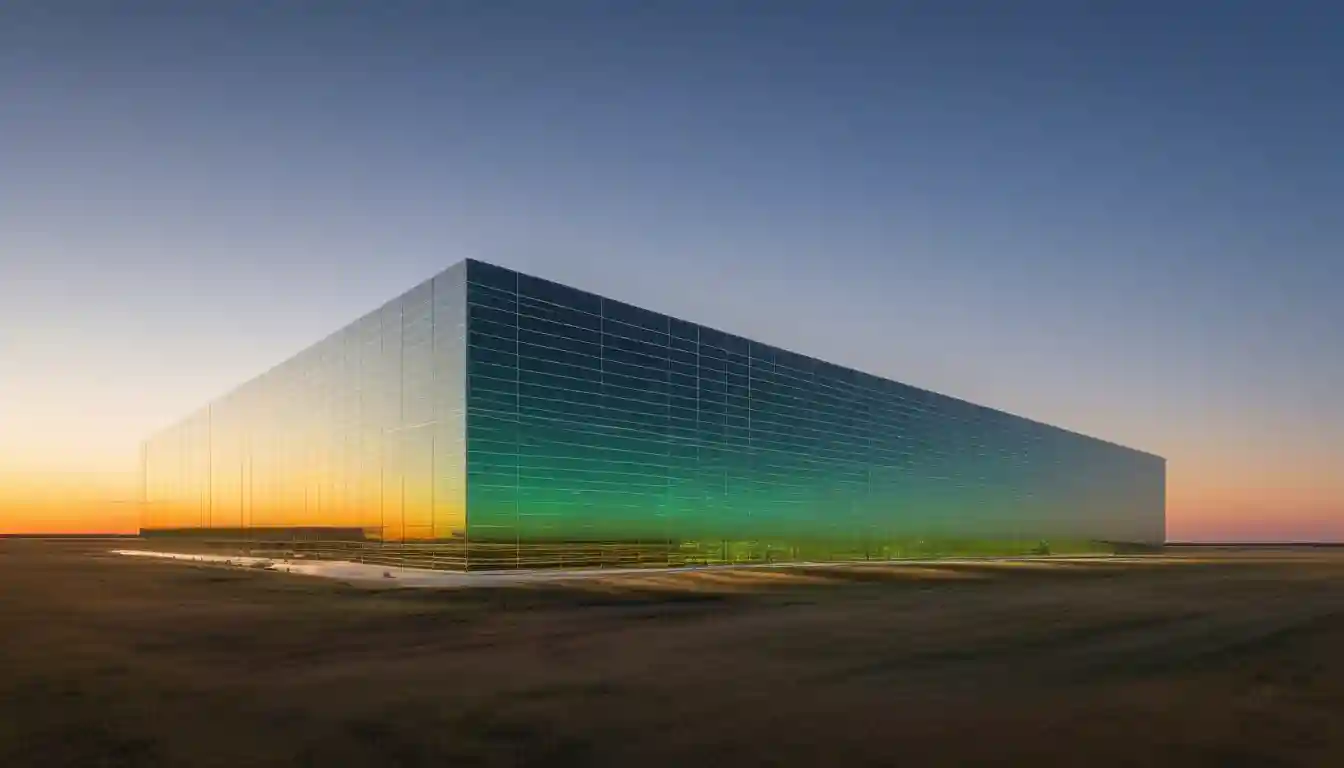The New Digital Gold Rush: Google's $9 Billion Oklahoma Gambit Reshapes America's AI Infrastructure Race
PRYOR, Oklahoma — When Google President and Chief Investment Officer Ruth Porat arrived at the company's Pryor data center campus, her announcement carried implications far beyond Oklahoma's borders. The technology giant's commitment to invest $9 billion across the state over the next two years represents the largest single corporate investment in Oklahoma history and signals a fundamental transformation in how America's technological infrastructure is being rebuilt for the artificial intelligence era.

The investment encompasses two major components: construction of an entirely new data center campus in Stillwater and significant expansion of Google's existing Pryor facility, which has operated since 2011 in the MidAmerica Industrial Park. The Pryor campus, already the recipient of $4.4 billion in cumulative investment, ranks as Google's second-largest data center globally—a scale that will expand dramatically under the new commitment.
"Google is helping to power a new era of American innovation with our investments in Oklahoma," Porat stated during the announcement, emphasizing the company's nearly two-decade presence in the state.
The scope of Google's Oklahoma commitment becomes clearer when viewed against the company's broader infrastructure strategy. Since establishing its first data center in Mayes County, Google has invested over $5.7 billion statewide, generating $2.2 billion in economic activity for local businesses and residents in 2024 alone. The new $9 billion pledge effectively doubles the company's historical investment in a compressed two-year timeline.
"What we're witnessing is not just infrastructure expansion, but a fundamental reconfiguration of America's technological geography," noted one industry analyst tracking hyperscale data center development.
The Great Migration Inland
Google's Oklahoma expansion exemplifies a broader industry trend that has seen technology giants abandon coastal concentration in favor of interior locations rich in renewable energy and affordable land. The company's move aligns with Alphabet's elevated 2025 capital expenditure guidance of approximately $85 billion, largely dedicated to AI infrastructure and data centers.

This stampede toward middle America has intensified dramatically. Microsoft recently committed $3.3 billion to Wisconsin AI infrastructure and secured a 20-year agreement to restart Three Mile Island's nuclear reactor for data center power. Amazon Web Services announced an $11 billion Indiana campus, while Meta committed $10 billion to Louisiana AI-optimized facilities.
Projected 2025 Capital Expenditures for AI Infrastructure by Major Tech Companies, illustrating the massive scale of investment.
| Company | Projected 2025 AI Capex (USD) |
|---|---|
| Amazon (AWS) | Over $100 billion |
| Microsoft | $80 billion |
| Google (Alphabet) | $75 billion - $85 billion |
| Meta | $60 billion - $69 billion |
The numbers tell a compelling story: Microsoft projects roughly $80 billion in fiscal 2025 data center investments, while Meta has guided $60-65 billion in capital expenditure for AI infrastructure. These commitments represent a collective transformation of how the technology sector approaches physical infrastructure.
Oklahoma's Strategic Advantages Emerge
The choice of Oklahoma reflects sophisticated infrastructure calculations rather than mere cost arbitrage. The state sits within the Southwest Power Pool, where wind generates approximately 42% of in-state electricity—among the highest percentages nationally. This renewable energy abundance allows companies like Google to pursue aggressive carbon-free energy matching targets while maintaining cost efficiency.

Google has already secured over 724 megawatts of Oklahoma solar capacity through long-term power purchase agreements, complementing the state's substantial wind resources. The company achieved 87% carbon-free energy matching in 2022-2023 across its Oklahoma operations, demonstrating the viability of large-scale clean energy procurement in the region.
Electricity Generation Mix in the Southwest Power Pool (SPP), highlighting the significant contribution of wind power.
| Fuel Type | 2024 Energy Production |
|---|---|
| Wind | 38.0% |
| Natural Gas | 28.4% |
| Coal | 24.7% |
| Nuclear | 5.3% |
| Hydro | 3.1% |
| Solar | 0.4% |
| Other | 0.1% |
"What we're witnessing is not just an infrastructure buildout, but a fundamental reconfiguration of America's energy-technology nexus," noted one energy market specialist.
The state's existing transmission infrastructure and streamlined interconnection processes through the Southwest Power Pool's new large-load protocols provide additional competitive advantages. Oklahoma has also implemented substantial data center incentives and is exploring behind-the-meter power arrangements for major industrial users.
Beyond Silicon: The Human Capital Investment
Accompanying the physical infrastructure expansion, Google has committed $1 billion nationally to AI education initiatives, with the University of Oklahoma and Oklahoma State University participating in the inaugural cohort of the Google AI for Education Accelerator. This educational investment extends beyond corporate philanthropy—it represents strategic workforce development essential for sustaining large-scale technical operations.
The computational power required to train state-of-the-art AI models is growing at an exponential rate, a trend largely driven by the demands of large language models. This dramatic increase in computational need has resulted in a corresponding surge in the financial costs necessary to develop cutting-edge artificial intelligence.
The company has partnered with the electrical training ALLIANCE to expand Oklahoma's electrical workforce pipeline by 135%, explicitly addressing execution bottlenecks that could constrain project timelines. Such workforce investments have become standard practice for technology companies seeking to secure skilled labor and maintain community support for major developments.
Environmental Calculations and Community Impact
The expansion carries significant environmental implications that extend beyond renewable energy procurement. AI-optimized data centers typically consume substantial water resources for cooling, with industry averages approaching 1.9 liters per kilowatt-hour. Google has emphasized water replenishment projects and efficiency improvements, achieving a power usage effectiveness rating of 1.09 across its global fleet in 2024.
Power Usage Effectiveness (PUE) is a key metric used to measure a data center's energy efficiency. It is calculated by dividing the total facility power by the IT equipment power, where a lower score signifies greater efficiency and the ideal PUE is 1.0.
Local communities face complex trade-offs between economic development and resource consumption. Google's investments have generated an estimated $2.2 billion in economic activity for Oklahoma businesses and residents in 2024 alone, according to company impact studies. However, rapid data center expansion can pressure electrical grids and water supplies while creating relatively few permanent operational jobs compared to construction employment.
Market Implications and Investment Opportunities
The Oklahoma investment illuminates several emerging investment themes across the technology infrastructure landscape. Transmission equipment manufacturers and electrical contractors with Southwest Power Pool exposure stand to benefit from accelerated grid modernization requirements. The region's clean energy developers may command premium offtake agreements as hyperscale companies compete for renewable capacity.
Advanced cooling and water management technologies represent another potential growth area, as data center operators seek to minimize environmental impact while managing increasingly dense computing loads. The industry's shift toward owner-operated facilities rather than leased colocation space may pressure traditional data center real estate investment trusts in favor of specialized construction and engineering firms.

Nuclear power life extension and small modular reactor development could gain momentum as technology companies seek firm, carbon-free electricity sources to complement intermittent renewables. Microsoft's Three Mile Island agreement suggests growing appetite for such arrangements among major cloud providers.
The Broader Transformation
Google's Oklahoma commitment represents one visible element of a trillion-dollar global infrastructure transformation driven by artificial intelligence computing demands. Industry analysts project that current investment patterns may continue through 2027, driven by competitive pressures and rapidly evolving AI capabilities.
Projected Global Data Center Market Growth, Driven by AI Demand.
| Market Segment | 2024 Value (USD Billion) | Projected Value (USD Billion) | Forecast Period | CAGR (%) |
|---|---|---|---|---|
| AI Data Center Market | 15.02 | 93.60 | 2025-2032 | 26.8 |
| AI Data Center Market | 167.76 | 933.76 | 2025-2030 | 31.6 |
| AI Data Center Market | 13.67 | 165.73 | 2025-2034 | 28.34 |
| Hyperscale Data Center Market | 58.3 | 591 | 2025-2034 | 26.3 |
| Hyperscale Data Center Market | 162.79 | 608.54 | 2024-2030 | 24.6 |
However, this expansion carries inherent risks. Technology cycles could render early infrastructure investments less optimal as computing architectures evolve. Interconnection delays and equipment shortages—particularly for transformers and switchgear—pose potential schedule risks that could exceed construction timelines.
The concentration of massive computing resources also raises questions about regional grid stability and resource allocation. Regulatory responses to large-load growth vary significantly across states, with some implementing specialized tariffs to prevent cross-subsidization of residential customers.
Looking Forward
Market observers anticipate that Oklahoma's emergence as a multi-tenant AI infrastructure hub could attract additional hyperscale investments within 12-18 months, contingent on successful interconnection milestones. The state's combination of renewable energy resources, transmission access, and supportive regulatory environment positions it favorably for continued expansion.
For investors seeking exposure to this transformation, opportunities may emerge across transmission infrastructure, renewable energy development, specialized construction services, and advanced cooling technologies. However, the rapid pace of change and substantial capital requirements suggest that success will favor companies with proven execution capabilities and flexible operational approaches.
As the artificial intelligence revolution reshapes global computing infrastructure, Oklahoma's transformation from energy producer to digital powerhouse illustrates how technological disruption can revitalize entire regions. The ultimate test will be whether these massive investments deliver sustained economic benefits that justify their environmental and social costs.
Investment considerations should account for the volatile nature of technology infrastructure cycles and individual risk tolerance. Past performance does not guarantee future results, and investors should consult qualified financial advisors for personalized guidance.
